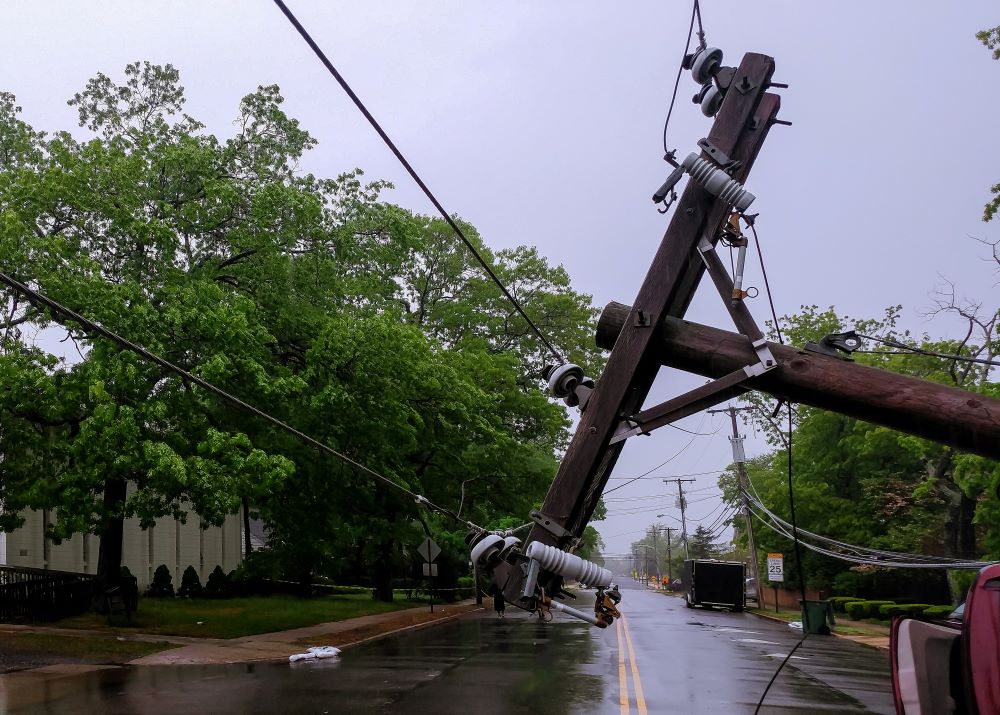
Hurricanes. Fires. Floods. Doesn’t it seem like each new season brings more extreme weather threats that result in damage and financial loss to communities, families, and businesses? Countries around the world are realizing there’s a better way to prepare for weather disasters than underestimating their power – parametric insurance. Natural disasters don’t have to leave you helpless in the rubble. The right weather insurance can fill a large protection gap so your business finds solid ground, no matter which way the winds blow.
Although parametric insurance has been around for many years, businesses are just starting to realize its growth potential and how this type of policy can be better suited for some industries. Today we learn what parametric insurance is, how it compares to traditional and indemnity insurance, and how it works to benefit a business. We discover how a parametric insurance policy is the future of protection through its natural pairing with data and explore the changing climate’s impact on forecasting and weather predictions.
What is Parametric Insurance?
Pulled from CPCU’s Insights Magazine, parametric insurance is “insurance that pays a lump sum upon the occurrence of a predefined event.” What qualifies as the triggering event needs to be based on a verifiable data point, measurement, or index–a parameter. Parametric insurance solutions offer a guaranteed direct payout after a qualifying event and businesses can decide what these qualifying events are and how and when they want to protect against them. In other words, parametric insurance offers just enough, when you need it, where it’s needed. For example, a farmer is worried that high winds could damage his silo. He buys parametric property insurance that triggers if wind speeds in his area exceed a predefined threshold. His claim is paid without the need for an adjuster to review damage.
Parametric insurance is a broad solution, and can truly be tailored to what a business owner needs to cover. The most common usage is parametric weather insurance, used to help protect a business’s financial exposure due to a weather event. Other examples of ways businesses can use this insurance include:
• Crop yield
• Power outage
• Market indices
• Natural catastrophe
How Does It Work?
In order for parametric insurance to work as intended, three components are needed: a complete risk assessment, a tailored policy tailored, and a quick, hassle-free payout. We dive into each component below:
Risk Assessment
An insurance company helps business owners figure out what risks should be insured and what shouldn’t be by first understanding the business model, potential risks and exposures, and ability to withstand future shocks or losses.
Tailored Policy
Together, the insurance company and the business design a policy that works for their needs. Payment triggers, payout structure, term length, are all structured to each client’s needs.
Immediate Payout
A triggered parametric policy payout can be sent within four weeks. There’s no need for loss adjustment, as long as the trigger or index is established, normally by a third-party agent like the national earthquake center or a weather agency.
Parametric vs. Indemnity Insurance
Parametric insurance is different from a traditional policy in that parametric insurance solutions are not intended to replace traditional insurance programs–they are designed to complement them. Parametric policies can fill the protection gaps left by traditional indemnity insurance like deductibles, strict coverage terms and excluded perils. It’s meant to provide a business owner with an initial layer of protection to recover from an unexpected loss.
The differences between traditional insurance and parametric insurance are outlined below:
| PARAMETRIC SOLUTIONS | TRADITIONAL INSURANCE | |
| NATURE OF RISK (PAYOUT TRIGGER) | Covers payout according to predefined parameters. | Reimburses the insured for actual losses incurred or damage to a physical asset. |
| RECOVERY | Predetermined payment structure based on event parameter or index value. | Reimbursement of actual loss sustained. |
| BASIS RISK | Uses predefined parameters, a pay-out matrix, and the defined limit. | Includes deductibles, exclusions and conditions that balance insurer and insured interests. |
| CLAIMS PROCESS | Transparent, predictable, based on parameter, fast payout. | Complex and based on loss adjuster assessment. |
| TERM | Single or multi-year | Usually annual |
| STRUCTURE | Customized products and uniquely tailored index and pay-out provisions. | Standardized products and contracts. |
Is Parametric Insurance The Future?
As stated in a recent article from Business Insurance Management, “As risks evolve and insureds look for more innovative ways to transfer their risk, parametric solutions are likely to gain in prevalence.” Traditional insurance just isn’t cutting it anymore. When businesses forgo or purchase less traditional disaster coverage, less money is available when it’s needed most, resulting in slower recovery for communities. Businesses deserve a better, more customized solution for their risk management needs.Below are advantages to parametric insurance:
Faster Recovery
Businesses can get paid out almost immediately, which is a game-changer for many because traditional payouts can take months to complete. Having cash on hand when it’s needed most can kick-start economic recovery and build financial resilience over time.
Immense Data Possibilities
As data evolves, so does parametric insurance. Sensor technology or artificial intelligence (AI) can create a broader assortment of informational indexes, which can lead to advancements in coverage options. New solutions are not protecting against direct physical damage, but rather the indirect consequences of events, including business interruption costs and loss of attraction. Before, businesses couldn’t measure their financial losses without physical evidence. We can now rely on (AI) to model the indexes upon which payout triggers are based.
Built For Change
As extreme weather events become more common around the world, insurers have seen an opportunity to expand the customer base to states and communities impacted. Using data and insights, we can predict risks, and businesses can use parametric insurance to protect their bottom line from weather situations that have been notoriously “random” or “unique”. In a great example of this type of protection, the government of Guatemala recently received a payout after a week of devastating rainfall.
Unique Risk Management Tool
Businesses can’t take on any more risk than they already have. A parametric insurance policy is a policy designed to fill the gaps left by traditional insurance and help provide more financial security and support. It’s a great tool for risk management because it’s a different way to think about how you can use insurance to solve problems that can’t be measured just by property damage. For example, in the instance of rain. Although a common rainstorm typically does not cause physical damage (and thus is not covered under a traditional insurance policy), it can cause significant financial harm to a business with outdoor exposure. A parametric rain insurance policy would fill in this gap.
The first step in using parametric insurance at its highest potential is to work with an insurance company that looks at solutions from several angles, and uses data and analytics to develop a policy that meets your unique business needs. Vortex Insurance Agency is positioned to be the best partner to assess your risks, discover opportunities, and help protect your bottom line against unpredictable weather.
We make managing weather risks easy. Start building your tailored parametric weather insurance policy today with a free quote.

